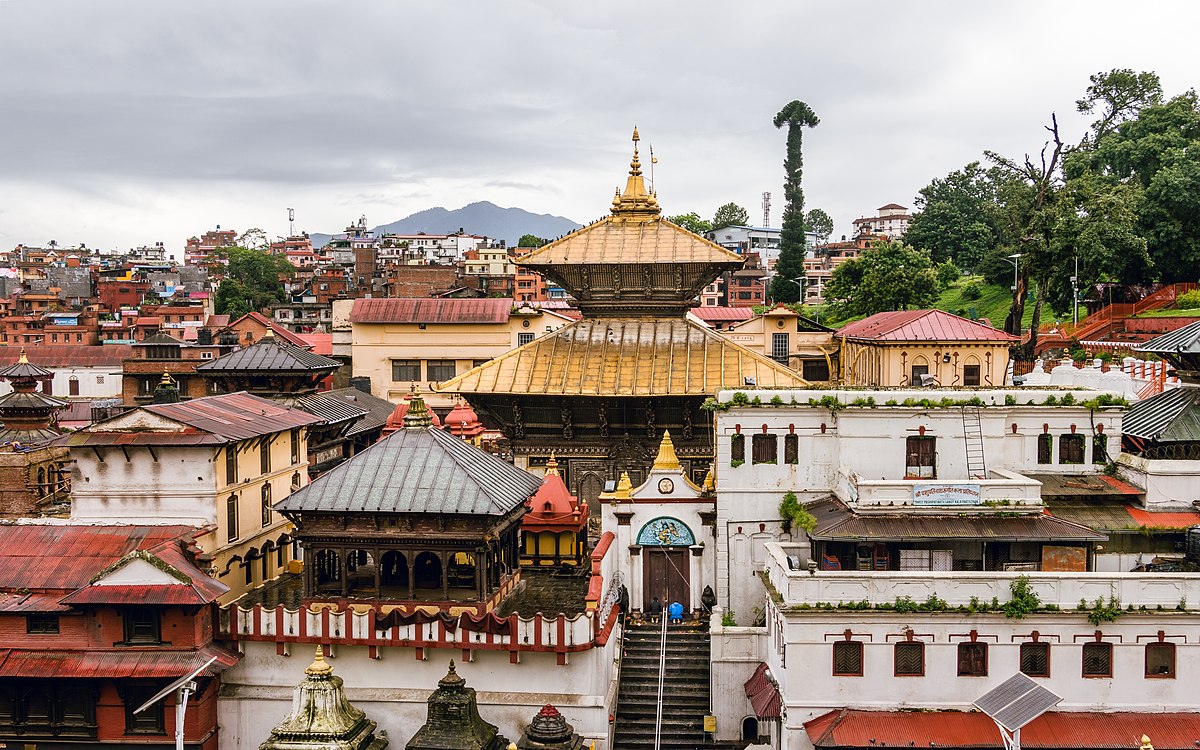
Nepal a country nestled in the heart of the Himalayas is renowned for its stunning landscapes rich cultural heritage and deep spiritual roots. Home to a plethora of religious sites It attracts pilgrims and tourists from around the world. Each offering a unique blend of history spirituality and breathtaking beauty.
Here we explore the ten most famous religious places in Nepal:
-
Pashupatinath Temple – A Sacred Abode of Lord Shiva
Pashupatinath Temple located on the banks of the Bagmati River in Kathmandu, is one of the most revered Hindu temples in Nepal dedicated to Lord Shiva. Recognized as a UNESCO World Heritage Site, it draws thousands of devotees, especially during the Maha Shivaratri festival. The temple’s golden spire and intricate wood carvings exemplify Nepalese architecture.
- Highlights: Maha Shivaratri Festival, Arya Ghat (cremation site), and numerous smaller temples within the complex.
- Visitor Tip: Early morning or late evening visits are ideal to avoid crowds and witness the Aarti (prayer ceremony).
-
Boudhanath Stupa -The Great Stupa of Kathmandu
Boudhanath Stupa, one of the largest stupas in the world, stands as a symbol of peace and enlightenment. Located in the heart of Kathmandu, this UNESCO World Heritage Site is a major pilgrimage site for Buddhists. The stupa’s massive mandala and the all-seeing eyes of Buddha are iconic.
- Highlights: Prayer wheels, Tibetan monasteries, and vibrant prayer flags.
- Visitor Tip: Visit during the Tibetan New Year (Losar) for a vibrant cultural experience.
-
Swayambhunath (Monkey Temple)- A Mix of Faiths and Cultures
Perched atop a hill in the Kathmandu Valley, Swayambhunath, commonly known as the Monkey Temple, offers panoramic views of the city. This ancient religious complex combines Hindu and Buddhist elements, with its striking stupa, numerous shrines, and a plethora of monkeys adding to its charm.
- Highlights: Swayambhu stupa, Vajra (thunderbolt) statue, and the monastery.
- Visitor Tip: Climb the 365 steps for a spiritual journey and a rewarding view.
-
Lumbini- The Birthplace of Lord Buddha
Lumbini, the birthplace of Siddhartha Gautama (Lord Buddha), is a cornerstone of Buddhist pilgrimage. Located in the Rupandehi District, it is another UNESCO World Heritage Site. The Maya Devi Temple, which marks the exact spot of Buddha’s birth, is a place of profound peace and reflection.
- Highlights: Ashoka Pillar, Sacred Garden, and various international monasteries.
- Visitor Tip: Allocate a full day to explore the vast Lumbini Development Zone.
-
Muktinath Temple- A Divine Fusion of Hinduism and Buddhism
Situated in the Mustang District at an altitude of 3,800 meters, Muktinath Temple is a sacred site for both Hindus and Buddhists. Hindus believe that bathing in the temple’s 108 waterspouts brings salvation, while Buddhists revere the site as a place associated with Guru Rinpoche (Padmasambhava).
- Highlights: 108 water spouts, Jwala Mai temple, and stunning mountain views.
- Visitor Tip: Best visited during the autumn months to avoid heavy snowfall.
-
Janaki Mandir – A Royal Tribute to Goddess Sita
Janaki Mandir, located in Janakpur, is a majestic temple dedicated to Goddess Sita, the consort of Lord Rama. Built in the Indo-Islamic style, this marble marvel is a significant pilgrimage site, especially for devotees of the Ramayana.
- Highlights: Vivah Panchami festival, ornate architecture, and the Ram-Sita marriage ceremony re-enactment.
- Visitor Tip: Visit during Vivah Panchami (November/December) to witness grand celebrations.
-
Manakamana Temple- The Wish-Fulfilling Goddess
Manakamana Temple, perched on a ridge in the Gorkha District, is dedicated to the goddess Bhagwati. Devotees believe that their wishes are granted upon visiting this temple. The temple is accessible by a cable car ride, offering stunning views of the surrounding hills and valleys.
- Highlights: Scenic cable car ride, traditional rituals, and the temple fairs.
- Visitor Tip: Avoid weekends and holidays to escape the long queues for the cable car.
-
Budhanilkantha Temple – The Sleeping Vishnu
Budhanilkantha Temple, located at the base of the Shivapuri Hill in Kathmandu, is famous for its large statue of Lord Vishnu reclining on a bed of serpents. This open-air temple attracts both Hindu devotees and tourists, fascinated by the impressive sculpture carved from a single block of stone.
- Highlights: The reclining Vishnu statue, annual Haribodhini Ekadashi festival.
- Visitor Tip: Morning visits provide a serene environment and better opportunities for photography.
-
Pathibhara Devi Temple- The Sacred High Altitude Shrine
Pathibhara Devi Temple, located in the Taplejung District at an altitude of 3,794 meters, is a significant pilgrimage site in eastern Nepal. Devotees flock here to seek blessings from the goddess Pathibhara, believed to fulfill wishes and grant prosperity.
- Highlights: Spectacular views of the Kanchenjunga range, local cultural experiences.
- Visitor Tip: The trek to the temple is challenging; appropriate gear and preparation are essential.
-
Tengboche Monastery- The Spiritual Heart of the Everest Region
Tengboche Monastery, situated in the Everest region, is the largest monastery in the Khumbu area. It is renowned for its spiritual significance and breathtaking backdrop of Mount Everest and other Himalayan peaks. The annual Mani Rimdu festival featuring masked dances and ritualsis a major draw.
- Highlights: Mani Rimdu festival, stunning mountain scenery, and serene environment.
- Visitor Tip: Combine your visit with a trek to Everest Base Camp for a comprehensive experience.
Conclusion
Nepal’s religious sites offer not just spiritual solace but also a deep dive into the country’s rich cultural and historical tapestry. Whether you are a pilgrim seeking blessings or a traveler exploring diverse traditions, these ten famous religious places in Nepal provide a perfect blend of spirituality, history, and natural beauty. Plan your visit and embark on a journey of divine discovery and cultural enrichment.
